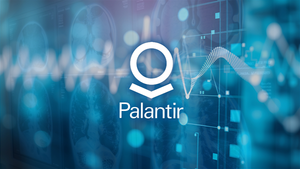
The global technology landscape is in the throes of an unprecedented "AI chip supercycle," a fierce competition for supremacy in the foundational hardware that powers the artificial intelligence revolution. This high-stakes race, driven by the insatiable demand for processing power to fuel large language models (LLMs) and generative AI, is reshaping the semiconductor industry, redefining geopolitical power dynamics, and accelerating the pace of technological innovation across every sector. From established giants to nimble startups, companies are pouring billions into designing, manufacturing, and deploying the next generation of AI accelerators, understanding that control over silicon is paramount to AI leadership.
This intense rivalry is not merely about faster processors; it's about unlocking new frontiers in AI, enabling capabilities that were once the stuff of science fiction. The immediate significance lies in the direct correlation between advanced AI chips and the speed of AI development and deployment. More powerful and specialized hardware means larger, more complex models can be trained and deployed in real-time, driving breakthroughs in areas from autonomous systems and personalized medicine to climate modeling. This technological arms race is also a major economic driver, with the AI chip market projected to reach hundreds of billions of dollars in the coming years, creating immense investment opportunities and profoundly restructuring the global tech market.
Architectural Revolutions: The Engines of Modern AI
The current generation of AI chip advancements represents a radical departure from traditional computing paradigms, characterized by extreme specialization, advanced memory solutions, and sophisticated interconnectivity. These innovations are specifically engineered to handle the massive parallel processing demands of deep learning algorithms.
NVIDIA (NASDAQ: NVDA) continues to lead the charge with its groundbreaking Hopper (H100) and the recently unveiled Blackwell (B100/B200/GB200) architectures. The H100, built on TSMC’s 4N custom process with 80 billion transistors, introduced fourth-generation Tensor Cores capable of double the matrix math throughput of its predecessor, the A100. Its Transformer Engine dynamically optimizes precision (FP8 and FP16) for unparalleled performance in LLM training and inference. Critically, the H100 integrates 80 GB of HBM3 memory, delivering over 3 TB/s of bandwidth, alongside fourth-generation NVLink providing 900 GB/s of bidirectional GPU-to-GPU bandwidth. The Blackwell architecture takes this further, with the B200 featuring 208 billion transistors on a dual-die design, delivering 20 PetaFLOPS (PFLOPS) of FP8 and FP6 performance—a 2.5x improvement over Hopper. Blackwell's fifth-generation NVLink boasts 1.8 TB/s of total bandwidth, supporting up to 576 GPUs, and its HBM3e memory configuration provides 192 GB with an astonishing 34 TB/s bandwidth, a five-fold increase over Hopper. A dedicated decompression engine and an enhanced Transformer Engine with FP4 AI capabilities further cement Blackwell's position as a powerhouse for the most demanding AI workloads.
Advanced Micro Devices (NASDAQ: AMD) is rapidly emerging as a formidable challenger with its Instinct MI300X and MI300A series. The MI300X leverages a chiplet-based design with eight accelerator complex dies (XCDs) built on TSMC's N5 process, featuring 304 CDNA 3 compute units and 19,456 stream processors. Its most striking feature is 192 GB of HBM3 memory, offering a peak bandwidth of 5.3 TB/s—significantly higher than NVIDIA's H100—making it exceptionally well-suited for memory-intensive generative AI and LLM inference. The MI300A, an APU, integrates CDNA 3 GPUs with Zen 4 x86-based CPU cores, allowing both CPU and GPU to access a unified 128 GB of HBM3 memory, streamlining converged HPC and AI workloads.
Alphabet (NASDAQ: GOOGL), through its Google Cloud division, continues to innovate with its custom Tensor Processing Units (TPUs). The latest TPU v5e is a power-efficient variant designed for both training and inference. Each v5e chip contains a TensorCore with four matrix-multiply units (MXUs) that utilize systolic arrays for highly efficient matrix computations. Google's Multislice technology allows networking hundreds of thousands of TPU chips into vast clusters, scaling AI models far beyond single-pod limitations. Each v5e chip is connected to 16 GB of HBM2 memory with 819 GB/s bandwidth. Other hyperscalers like Microsoft (NASDAQ: MSFT) with its Azure Maia AI Accelerator, Amazon (NASDAQ: AMZN) with Trainium and Inferentia, and Meta Platforms (NASDAQ: META) with MTIA, are all developing custom Application-Specific Integrated Circuits (ASICs). These ASICs are purpose-built for specific AI tasks, offering superior throughput, lower latency, and enhanced power efficiency for their massive internal workloads, reducing reliance on third-party GPUs.
These chips differ from previous generations primarily through their extreme specialization for AI workloads, the widespread adoption of High Bandwidth Memory (HBM) to overcome memory bottlenecks, and advanced interconnects like NVLink and Infinity Fabric for seamless scaling across multiple accelerators. The AI research community and industry experts have largely welcomed these advancements, seeing them as indispensable for the continued scaling and deployment of increasingly complex AI models. NVIDIA's strong CUDA ecosystem remains a significant advantage, but AMD's MI300X is viewed as a credible challenger, particularly for its memory capacity, while custom ASICs from hyperscalers are disrupting the market by optimizing for proprietary workloads and driving down operational costs.
Reshaping the Corporate AI Landscape
The AI chip race is fundamentally altering the competitive dynamics for AI companies, tech giants, and startups, creating both immense opportunities and strategic imperatives.
NVIDIA (NASDAQ: NVDA) stands to benefit immensely as the undisputed market leader, with its GPUs and CUDA ecosystem forming the backbone of most advanced AI development. Its H100 and Blackwell architectures are indispensable for training the largest LLMs, ensuring continued high demand from cloud providers, enterprises, and AI research labs. However, NVIDIA faces increasing pressure from competitors and its own customers.
Advanced Micro Devices (NASDAQ: AMD) is rapidly gaining ground, positioning itself as a strong alternative. Its Instinct MI300X/A series, with superior HBM memory capacity and competitive performance, is attracting major players like OpenAI and Oracle, signifying a genuine threat to NVIDIA's near-monopoly. AMD's focus on an open software ecosystem (ROCm) also appeals to developers seeking alternatives to CUDA.
Intel (NASDAQ: INTC), while playing catch-up, is aggressively pushing its Gaudi accelerators and new chips like "Crescent Island" with a focus on "performance per dollar" and an open ecosystem. Intel's vast manufacturing capabilities and existing enterprise relationships could allow it to carve out a significant niche, particularly in inference workloads and enterprise data centers.
The hyperscale cloud providers—Alphabet (NASDAQ: GOOGL), Microsoft (NASDAQ: MSFT), Amazon (NASDAQ: AMZN), and Meta Platforms (NASDAQ: META)—are perhaps the biggest beneficiaries and disruptors. By developing their own custom ASICs (TPUs, Maia, Trainium/Inferentia, MTIA), they gain strategic independence from third-party suppliers, optimize hardware precisely for their massive, specific AI workloads, and significantly reduce operational costs. This vertical integration allows them to offer differentiated and potentially more cost-effective AI services to their cloud customers, intensifying competition in the cloud AI market and potentially eroding NVIDIA's market share in the long run. For instance, Google's TPUs power over 50% of its AI training workloads and 90% of Google Search AI models.
AI Startups also benefit from the broader availability of powerful, specialized chips, which accelerates their product development and allows them to innovate rapidly. Increased competition among chip providers could lead to lower costs for advanced hardware, making sophisticated AI more accessible. However, smaller startups still face challenges in securing the vast compute resources required for actual-scale AI, often relying on cloud providers' offerings or seeking strategic partnerships. The competitive implications are clear: companies that can efficiently access and leverage the most advanced AI hardware will gain significant strategic advantages, influencing market positioning and potentially disrupting existing products or services with more powerful and cost-effective AI solutions.
A New Era of AI: Wider Implications and Concerns
The AI chip race is more than just a technological contest; it represents a fundamental shift in the broader AI landscape, impacting everything from global economics to national security. These advancements are accelerating the trend towards highly specialized, energy-efficient hardware, which is crucial for the continued scaling of AI models and the widespread adoption of edge computing. The symbiotic relationship between AI and semiconductor innovation is creating a powerful feedback loop: AI's growth demands better chips, and better chips unlock new AI capabilities.
The impacts on AI development are profound. Faster and more efficient hardware enables the training of larger, more complex models, leading to breakthroughs in personalized medicine, climate modeling, advanced materials discovery, and truly intelligent robotics. This hardware foundation is critical for real-time, low-latency AI processing, enhancing safety and responsiveness in critical applications like autonomous vehicles.
However, this race also brings significant concerns. The immense cost of developing and manufacturing cutting-edge chips (fabs costing $15-20 billion) is a major barrier, leading to higher prices for advanced GPUs and a potentially fragmented, expensive global supply chain. This raises questions about accessibility for smaller businesses and developing nations, potentially concentrating AI innovation among a few wealthy players. OpenAI CEO Sam Altman has even called for a staggering $5-7 trillion global investment to produce more powerful chips.
Perhaps the most pressing concern is the geopolitical implications. AI chips have transitioned from commercial commodities to strategic national assets, becoming the focal point of a technological rivalry, particularly between the United States and China. Export controls, such as US restrictions on advanced AI chips and manufacturing equipment to China, are accelerating China's drive for semiconductor self-reliance. This techno-nationalist push risks creating a "bifurcated AI world" with separate technological ecosystems, hindering global collaboration and potentially leading to a fragmentation of supply chains. The dual-use nature of AI chips, with both civilian and military applications, further intensifies this strategic competition. Additionally, the soaring energy consumption of AI data centers and chip manufacturing poses significant environmental challenges, demanding innovation in energy-efficient designs.
Historically, this shift is analogous to the transition from CPU-only computing to GPU-accelerated AI in the late 2000s, which transformed deep learning. Today, we are seeing a further refinement, moving beyond general-purpose GPUs to even more tailored solutions for optimal performance and efficiency, especially as generative AI pushes the limits of even advanced GPUs. The long-term societal and technological shifts will be foundational, reshaping global trade, accelerating digital transformation across every sector, and fundamentally redefining geopolitical power dynamics.
The Horizon: Future Developments and Expert Predictions
The future of AI chips promises a landscape of continuous innovation, marked by both evolutionary advancements and revolutionary new computing paradigms. In the near term (1-3 years), we can expect ubiquitous integration of Neural Processing Units (NPUs) into consumer devices like smartphones and "AI PCs," which are projected to comprise 43% of all PC shipments by late 2025. The industry will rapidly transition to advanced process nodes, with 3nm and 2nm technologies delivering further power reductions and performance boosts. TSMC, for example, anticipates high-volume production of its 2nm (N2) process node in late 2025, with major clients already lined up. There will be a significant diversification of AI chips, moving towards architectures optimized for specific workloads, and the emergence of processing-in-memory (PIM) architectures to address data movement bottlenecks.
Looking further out (beyond 3 years), the long-term future points to more radical architectural shifts. Neuromorphic computing, inspired by the human brain, is poised for wider adoption in edge AI and IoT devices due to its exceptional energy efficiency and adaptive learning capabilities. Chips from IBM (NYSE: IBM) (TrueNorth, NorthPole) and Intel (NASDAQ: INTC) (Loihi 2) are at the forefront of this. Photonic AI chips, which use light for computation, could revolutionize data centers and distributed AI by offering dramatically higher bandwidth and lower power consumption. Companies like Lightmatter and Salience Labs are actively developing these. The vision of AI-designed and self-optimizing chips, where AI itself becomes an architect in semiconductor development, could lead to fully autonomous manufacturing and continuous refinement of chip fabrication. Furthermore, the convergence of AI chips with quantum computing is anticipated to unlock unprecedented potential in solving highly complex problems, with Alphabet (NASDAQ: GOOGL)'s "Willow" quantum chip representing a step towards large-scale, error-corrected quantum computing.
These advanced chips are poised to revolutionize data centers, enabling more powerful generative AI and LLMs, and to bring intelligence directly to edge devices like autonomous vehicles, robotics, and smart cities. They will accelerate drug discovery, enhance diagnostics in healthcare, and power next-generation VR/AR experiences.
However, significant challenges remain. The prohibitive manufacturing costs and complexity of advanced chips, reliant on expensive EUV lithography machines, necessitate massive capital expenditure. Power consumption and heat dissipation remain critical issues for high-performance AI chips, demanding advanced cooling solutions. The global supply chain for semiconductors is vulnerable to geopolitical risks, and the constant evolution of AI models presents a "moving target" for chip designers. Software development for novel architectures like neuromorphic computing also lags hardware advancements. Experts predict explosive market growth, potentially reaching $1.3 trillion by 2030, driven by intense diversification and customization. The future will likely be a heterogeneous computing environment, where different AI tasks are offloaded to the most efficient specialized hardware, marking a pivotal moment in AI history.
The Unfolding Narrative: A Comprehensive Wrap-up
The "Race for AI Chip Dominance" is the defining technological narrative of our era, a high-stakes competition that underscores the strategic importance of silicon as the fundamental infrastructure for artificial intelligence. NVIDIA (NASDAQ: NVDA) currently holds an unparalleled lead, largely due to its superior hardware and the entrenched CUDA software ecosystem. However, this dominance is increasingly challenged by Advanced Micro Devices (NASDAQ: AMD), which is gaining significant traction with its competitive MI300X/A series, and by the strategic pivot of hyperscale giants like Alphabet (NASDAQ: GOOGL), Microsoft (NASDAQ: MSFT), Amazon (NASDAQ: AMZN), and Meta Platforms (NASDAQ: META) towards developing their own custom ASICs. Intel (NASDAQ: INTC) is also making a concerted effort to re-establish its presence in this critical market.
This development is not merely a technical milestone; it represents a new computing paradigm, akin to the internet's early infrastructure build-out. Without these specialized AI chips, the exponential growth and deployment of advanced AI systems, particularly generative AI, would be severely constrained. The long-term impact will be profound, accelerating AI progress across all sectors, reshaping global economic and geopolitical power dynamics, and fostering technological convergence with quantum computing and edge AI. While challenges related to cost, accessibility, and environmental impact persist, the relentless innovation in this sector promises to unlock unprecedented AI capabilities.
In the coming weeks and months, watch for the adoption rates and real-world performance of AMD's next-generation accelerators and Intel's "Crescent Island" chip. Pay close attention to announcements from hyperscalers regarding expanded deployments and performance benchmarks of their custom ASICs, as these internal developments could significantly impact the market for third-party AI chips. Strategic partnerships between chipmakers, AI labs, and cloud providers will continue to shape the landscape, as will advancements in novel architectures like neuromorphic and photonic computing. Finally, track China's progress in achieving semiconductor self-reliance, as its developments could further reshape global supply chain dynamics. The AI chip race is a dynamic arena, where technological prowess, strategic alliances, and geopolitical maneuvering will continue to drive rapid change and define the future trajectory of artificial intelligence.
This content is intended for informational purposes only and represents analysis of current AI developments.
TokenRing AI delivers enterprise-grade solutions for multi-agent AI workflow orchestration, AI-powered development tools, and seamless remote collaboration platforms.
For more information, visit https://www.tokenring.ai/.






